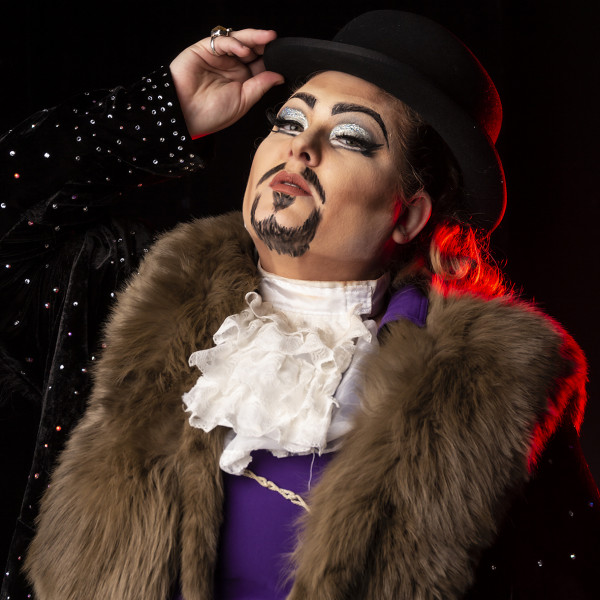
Drag Class! The Ultimate Amateur Drag Competition
Presented by: Hugo Grrrl’s Gigs
Produced by: Johnny O’Hagan Brebner
Ivy Bar & Cabaret, 27th Oct 2020
Reviewed by: Petra Shotwell
For 10 weeks, the Drag Class ‘classmates’ have been given performance assignments focused on different aspects of the drag artform, aiming to impress not only an audience, but an array of esteemed judges.
Tonight, Ivy Bar is jam-packed and the crowd is buzzing to see the now-graduates battle it out for the finale; Drag Class will finally crown a winner. With the deafening sound of a school bell, Hugo Grrrl (MC and Drag Headmaster) takes to the stage, glamorous as ever, to start the show.
Jack Christoph sets the bar high with his always-impressive costuming and a gender-swapped Cruella de Vil act. Tess Tease and her blow-up doll leave the audience both laughing and crying. Daya T, showing us that she’s more than just a pretty face, hides a skirt under her skinny jeans. While changing wigs mid-act might be a little dangerous, Louisiana Perkins performs a funny, passionate Britney Spears tribute. Jezebel delivers a killer lip-sync, and, after vigorously devouring her glass of fake blood with passionate pop-punk energy, leaves the stage sopping wet. With Marsha Mellow’s incredible stage presence and performance skills, audience members are wiping away tears as she transitions from queen to king, powerfully representing the transgender flag. Vixie and James Bondage, not often seen on one stage, both blow the audience away wearing a suit and ‘porn-stache’ on one side and a dress and pink hair extensions on the other. Wearing a gown made from images of her own face, Brenda? Areyouintheaudience (yes, that’s her name) takes self-love to another level in perhaps the most iconic moment of the night. Finally, the moment we’ve been waiting for, the imaginative Ju Májin takes the crown and the title of Grand Drag Class Dux with an extraordinary performance dedicated to his competition journey.
As one of many audience members with near-perfect attendance to Drag Class shows, I’m in awe of every performer’s progress, and can’t wait to see what they bring to the future of Wellington drag.












